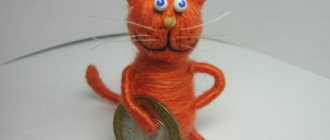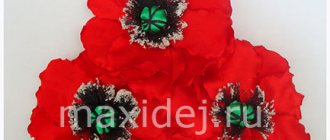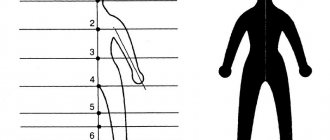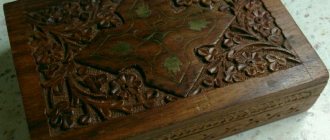Manufacturing Features
Let's consider several features of such devices.
- Such a camera consists of two main parts: a wall with a hole and a screen. Others serve to render or photograph an image.
- In a pinhole camera, the hole is analogous to the diaphragm of a camera. The distance from the aperture to the screen plays the role of focus.
- In large-sized devices, the dimensions of which range from tens of centimeters to meters, the quality of hole processing does not play a special role. But on a centimeter scale this is no longer the case.
- The most suitable material is aluminum sheet.
- It is best to pierce the diaphragm with a steel needle on a hard cardboard backing, then sand both surfaces with sandpaper.
- The optimal diameter depends on the focal length of the camera. The relationship between these two parameters is approximately as follows: the aperture diameter is several hundred times smaller than the focus. You can take 100-500 times depending on the desired quality and technological capabilities.
The best children's instant camera
Lumicube DK04
The best gift for a child from loving adults
Pros: the instant camera is specially created for children's creativity and has been a bestseller on Yandex.Market and Ozon for a year now. The device has all the necessary safety and quality certificates. Despite the fact that the device is aimed at children, it is multifunctional and has impressive characteristics.
The instant camera stores all pictures taken on a 16 GB memory card. This is enough to take up to 3000 photos. You can view them on a 2.4" display and print only those you like: children can not limit themselves in creativity, and adults can save on consumables. Even when the cartridge runs out, the gadget will continue to take pictures and save them in memory. Separately, we note that the price of the cartridge is 500 rubles, i.e. The cost of one photo card is a little more than 2 rubles.
The instant camera does not require batteries to operate - it is powered by a 1800 mAh battery, which is enough for 4 hours of continuous operation. Children will appreciate the ability to apply filters to photos: in the editor you can add beautiful frames, stars, hats or masks. An additional front camera allows you to take selfies. The size of the printed image is 50*100 mm.
The main camera of the children's instant camera is equipped with a 12 megapixel matrix, and in addition to photos, it is capable of shooting video in Full HD resolution (1920*1080). The built-in microphone will record sound in good quality. The device weighs only 165 grams and comes with a neck lanyard. Children will appreciate the stylish design of the instant camera and one of four possible body colors.
Cons: none found.
What is a camera obscura
A camera obscura (lat. camera – “room”, obscura – “darkened, dark”) is the simplest optical device, a prototype of a camera. It can be either a box or chest, on one of the walls of which a small peephole is cut out, and instead of the other there is a screen made of translucent material, or a dark room with the same small peephole and screen.
Another name for this device is a pinhole camera.
Which instant camera to buy
- The best children's instant camera is Lumicube DK04 . Every child dreams of receiving such a developmental gift;
- For collectors and lovers of iconic things in history, the Polaroid Now I-Type Instant Camera . The device is imbued with the spirit of nostalgia;
- If you are looking for a camera and a portable printer, then definitely - Canon Zoemini S ;
- For young and energetic people who like to experiment with shooting, the Fujifilm Instax SQ 20 ;
- The best inexpensive instant camera is the Fujifilm Instax Mini 11 .
Operating principle of a camera obscura
Before you make a camera obscura with your own hands, you need to understand how it works. Her work is based on the law of rectilinear propagation of light rays, known from school. Many narrow beams of light pass through the camera's peephole. Each of them leaves a light spot on the screen of the opposite wall, equal in size to a peephole.
Such spots from many rays overlap each other on the surface of the pinhole camera screen, thereby creating on it an optical reflection - a copy of the object or panorama located in front of this unique device.
Human eye and pinhole camera
A camera obscura, by the way, resembles the principle of its operation of the human eye - the image also appears on its screen through a small hole and upside down. This happens because the light enters both the eye and the apparatus at an angle - the rays reflected from the top of objects are directed downward, and the rays reflecting objects close to the ground are directed upward. They intersect inside the camera, so the image on the camera screen is upside down. In our body, the image is returned to the correct position by the brain, and in the camera - by a mirror.
Zenit-R1
The camera, which was sold in the online store Ritz Collectibles in 2002-2004, was previously auctioned on eBay.
It is a heavily modified ZENIT-3M (No. 66111855) with a Helios-44M-4 lens produced in 1976 (No. 7653993), with the inclusion of some parts from another camera - one of the Practicians produced by Pentacon (VEB Pentacon, GDR). The camera has an M42×1/45.5 optics attachment, a different shutter button (borrowed from “Practice”), a slightly enlarged mirror and many other features. The device is distinguished by a fairly high quality of manufacturing.
| Homemade Zenit-R1 |
History of the pinhole camera
Our distant ancestors also wondered how to make a camera obscura with their own hands - this phenomenon was first noticed by Aristotle back in the 4th century. BC.
The legendary Leonardo da Vinci was the first to describe the algorithm and mechanism of its operation. His invention was used by artists in the Middle Ages - a camera obscura helped them make paintings-copies of certain objects.
Scientists also thought about how to make a camera obscura with their own hands in a more “advanced” version later.
In 1568, the principle of operation of the pinhole camera was improved - the Venetian inventor De Barbaro replaced the screen with a plano-convex lens. This innovation significantly improved the clarity and saturation of the image. The device was called a steno-camera. It became a stepping stone to the modern camera.
Camera obscura made of cardboard
Obscura camera means dark room! In this instructable, we'll create a small dark room using cardboard, a cereal box, masking tape, and a cheap plastic hand lens. You can use this little gizmo to look at the world upside down, turn it into a camera obscura, or use it as a cell phone projector!
This is a great tool for teaching children about how the eye works, how we perceive light, and transparent and opaque materials.
Step 1: Gather Materials
You will need …
- Cardboard
- Box, chipboard, or file folder (something stiffer than paper but softer than cardboard)
- White paper or parchment
- Plastic hand lens
- Masking tape
- Scissors
- Box cutter or blade in precise form Cutting
- checkmate (not shown)
Step 2: Cut out the cardboard pieces
Using the template provided, cut out all of your cardboard pieces. You can do this with a box cutter, blade, or laser cutter if you have access to one. Try to keep the edges as straight as possible, this will make joining the pieces much easier.
Step 3: Glue the Cardboard Pieces
Lay out the pieces of cardboard as shown in the picture. Place one piece of tape on each side at the front, overlapping each side.
Step 4: Pinhole Camera Lens
Stick the lens onto the front hole. If you tilt the handle, the lens should fit without having to cut anything.
Step 5: Finish Assembly
Arrange all the pieces so that your box looks like a box. Tape all the outer edges, trying to cover any light gaps. The darker the inside of your box, the sharper your image will be. You can also cover the outside with dark paper if you like.
Step 6: Cut out the screen holder
Using the template provided, cut out the screen holder. If you use a file folder like I do, cutting two pieces and gluing them together will make it a little more durable. Make sure you add your ratings. This will be where you fold the holder into the frame.
Step 7: Fold the Frame and Glue It Together
This is the only difficult part of a pinhole camera. Fold the frame along the score line so that the corners are tucked into a small V. See the picture for details. Wrap the V and secure all four corners. When you're done, your frame should look like a photograph!
Step 8: Ribbon on Your Screen
Cut a piece of paper or parchment slightly larger than the hole in the frame. Tape along the inside of the chamber structure.
Step 9: Insert the frame and check it out!
Insert the frame into the back of the camera obscura. You can use the knobs to adjust the distance between the screen and the lens. Experiment with different distances, different light sources, and a darker window. Try turning your project into a pinhole camera or cell phone projector!
Pros and cons of instant cameras
Instant printing devices have a number of significant advantages, but, given their form factor, they also have their disadvantages:
Pros:
- The user receives a finished photo card 10 seconds after the photo is taken. You can immediately give it as a souvenir while traveling or use it to prepare postcards for friends;
- The photo turns out to be one of a kind. A unique moment of life is preserved on a unique photo card, which adds romance and mystery to the process;
- Instant printing machines are compact and weigh very little. They can be carried in your pocket and used at the right time;
- Instant cameras are a great option for small and beginning photographers. The price of some models is below 6,000 rubles, which makes them an excellent gift for young operators.
Minuses:
- The quality of the images cannot be compared even with cheap digital point-and-shoot cameras;
- There is a small selection of settings (focus, white balance, exposure, shutter speed and others), so it is very difficult to optimally adjust an instant camera to environmental conditions;
- The cassette is limited to 10 pictures - you will have to choose what to take very carefully;
- Considering the price of replacement cartridges, the cost of one photo card varies from manufacturer to 100-200 rubles.
Camera obscura or screen in a cup
See what a masterpiece you can create with a camera obscura.
An upside-down image of New York's Central Park in autumn was displayed on the walls and ceiling. The photograph was taken by Abelardo Morell using a camera obscura. Darken the room, he says, make a small hole for light, and the pictures of the world on the other side of the window will take up residence in your home.
Hm... - I don’t know... But the idea is tempting
Today we will make a simpler device than the one Morell used. But no less interesting.
We will need:
- Disposable plastic cup (preferably dark)
- Push pin or sewing pin
- Black acrylic paint (can be purchased in bookstores or mix gouache with PVA glue 1 to 1)
- Brush
- A sheet of parchment paper 12x12cm (you can try replacing it with tracing paper or a thin white napkin)
- Stationery eraser
- Candle + matches, flashlight
- Small figures or silhouettes for viewing
What to do:
- Carefully coat the cup with black paint on both sides, let the paint dry
- Make a very small hole in the center of the bottom of the cup using a pin or thumbtack. This will be the lens of a pinhole camera.
- Secure the paper to the cup with a rubber band. It will serve as a screen for a camera obscura.
- Light a candle or flashlight, darken the room and observe the light while holding the glass at arm's length with the screen facing you.
- Look closely and you will see a small crescent-shaped light spot on the dark background of the paper - this is an image of a flame, and it “stands on its head”!
- You can put different silhouettes in front of the flashlight, experiment with distances and shapes, you can turn the silhouettes upside down and get normal images.
How a camera obscura works can be easily understood from this figure:
Recommendations
The device in question is based on the laws of geometric optics. Displaying a picture on the screen does not require the use of optical elements, which by their nature distort light rays. This is due to the relative simplicity and low costs.
When building a pinhole photographing camera, shutter speed is measured in seconds and even hours, depending on the illumination of the objects. Therefore, it is very important to eliminate at home any possibility of exposure of photographic material in the camera: carefully isolate it from the penetration of the weakest ray with electrical tape or another method.
For the same reason, all internal surfaces of the camera must be coated with black paint to prevent glare. Another mandatory condition when photographing is to keep the camera still during exposure. Use a reliable, solid support or tripod.











